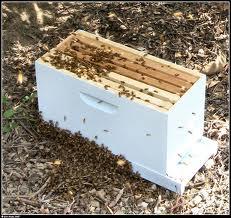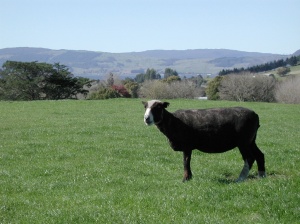Time for a quick re-cap: so far I’ve introduced you to some basic beekeeping issues like “what do beekeepers do?” pest and disease, bee-ethics, and an understanding of the bee’s role in ecosystems. At the same time I have followed a loose chronological time line, following the beekeeping season from the moment I started this blog in late summer/begin autumn until now (the onset of winter): from extracting honey to preparing the hive for winter.
Winter is a time to rest and breathe. There is not much to do for beekeepers once the hives are prepared for winter – except for perhaps feeding the hives if they need it.
This is why I would like to take a leap and jump to the next season: Spring!
Spring is time for renewal. This isn’t only true for beekeepers, but for most living things in nature.
For bees, spring means time for swarming (see my last post). Catching a swarm is one way for beekeepers to acquire new bees, but since the varroa invasion they are getting harder to find. So how else can we get them when we start from scratch?
We buy them.
Sounds silly, doesn’t it? It gives bees almost the same status as any other pet we acquire for our own enjoyment. Bees are different of course. We can’t “pet” them as individuals: we need them as a whole colony. However, we usually don’t buy them as a complete colony. A great way of acquiring a new hive is to buy a nucleus colony (a nuc) in spring. You can get them from a local beekeeper or from a queen bee producer.
A nuc before entering a bigger hive box (photo from www.littlehouseonthebighill.com)
A nucleus is a small colony. The bees occupy about four frames in the brood box (out of 9 or 10). You put them them in the middle of the box, next to the remaining empty frames. Then you introduce a queen. You can either choose to introduce a queen from a litte cage, or introduce a queen cell that will develop and emerge as a queen inside the hive (see my next post). From here on, your nuc is ready to go. You will find that the colony quickly expands and soon the bees will occupy all the frames, asking you for more space in more boxes.
For a successful introduction, there are a few important things to keep in mind:
- Make sure you introduce the nuc to their new home in the late afternoon or early evening. Otherwise they will fly all over the place!
- It’s best to feed them every week until the main honey flow starts in summer. Commonly beekeepers feed sugar syrup to their bees, but if you want to be organic you could feed them organic honey.
- Reduce the entrance until the bee population has expanded more (for more about entrance reducers see my post Robbers! Slime!)
- Be wise and get at least two hives. Seriously. When I started beekeeping I made the mistake of being modest, and I started small with only one hive. It turned out my hive wasn’t that doing that well because the queen was failing. If this happens when you have two hives, you can use your other hive as a back up. You could unite the colonies together, or you could swap brood frames between them, so your weak hive has some extra brood coming up which boosts the population growth. Because I didn’t have a back up-hive, I needed to look for another solution. Luckily, I found another beekeeper to swap brood frames with. But definitely not an ideal situation. Another benefit of having at least two hives is that you can make comparisons between colonies. Valuable experience for beginners!
A last important point is location of the hives.
Make sure its sunny, sheltered from winds, the ground is flat, it doesn’t annoy the neighbours, and that there are enough food sources around. Even though bees can fly between 3 and 5 kilometres if they have to, it’s best if they can find their flowers close to home. Make sure you weed the site. The hives shouldn’t be surrounded by long grass. If it rains the grass catches the wet drops and this makes the close surroundings of the hive damp. The bees hate it!
The hive doesn’t have to be in your backyard. Many places are possible, as long as you ask for permission and the site is easily accessible. A trend in New Zealand is to ask farmers permission to locate hives on their farm properties.
A wise beekeeper once predicted the future for me. While we have to ask farmers for permission now, in the future it might be the opposite: they will ask us to please put hives on their land and they might even pay us for it!
I hope he is right. What do you think?
—————————————————————————————————————————
Photo: Wikimedia Commons
Ps. There are alternative ways of starting up hives, like buying established hives or buying package bees. If you would like to know more about these options, please let me know!

